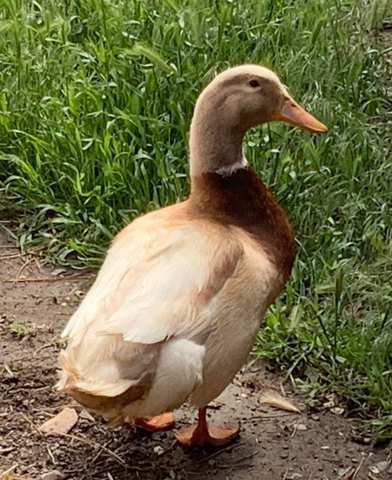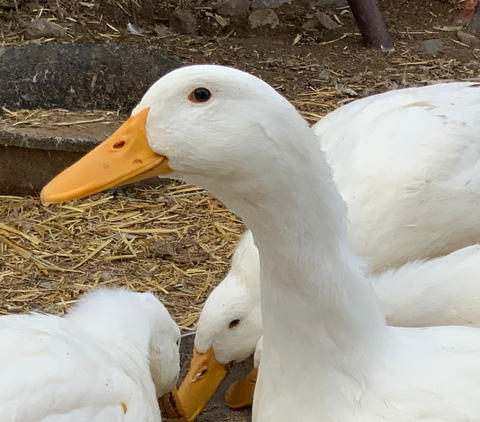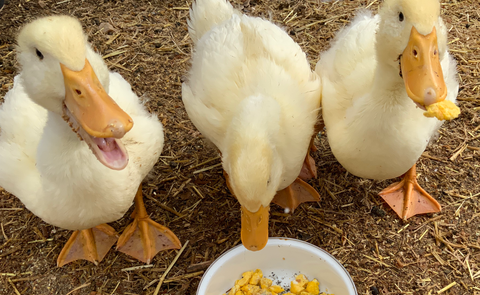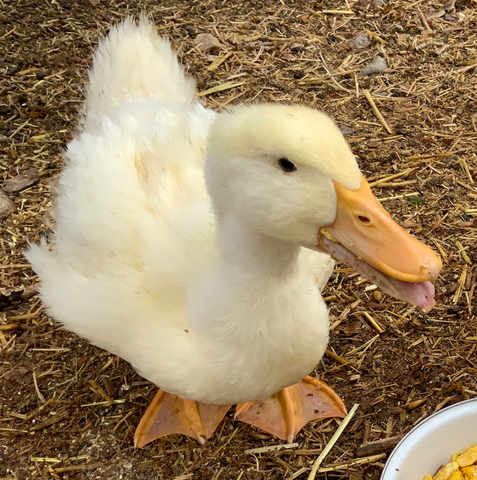Huntsmen Blog
A Duck’s 5 Senses
The following is an article I helped research for "The Hearty Hen House" hobby farming blog. I found researching and knowing this information very useful for hunting and tracking ducks. Enjoy:
Whenever I go out to feed and visit with my ducks, there is one that inevitably gives me this cute little head-cocked, sly look. I wonder what’s going through her mind as she stares at me. Is she wondering if I have more treats than what I’m sharing, or does she suspect me of being a wolf in people’s clothing? She doesn’t seem to be afraid, just watching. Sizing me up. Taking it all in. This silly little duck got me wondering about the senses that a duck uses to navigate in their world…so I did some research.

I think that all animals rely on the same 5 senses for survival that people do: sight, hearing, smell, taste, and touch. Because they live in the wild and some animals are predators and some are prey, different senses are more developed than others. Ducks are considered prey animals. They make a tasty meal for predators like skunks and raccoons, and people too. I suppose ducks know instinctively that they are prey animals and that they need to be especially watchful of danger. I know that I got these guys from the feed store when they were young, and I didn’t teach them about Stranger Danger. They seem to have a vast amount of cautious curiosity. When investigating, they always go as a group, talking, sharing the experience, warning one another about things they are unsure of, and heading the other direction when spooked or frightened. What senses does a duck rely on the most for safety and survival? Let’s take a look.
Sight. A duck’s sight seems to be their most important sense. A duck’s eyes are set on the side of their head giving them a wide field of vision, for example Mallards can see 360 degrees. That’s all the way around. Most ducks can see almost in a full circle, but each eye sees a different part of the landscape, providing an increased awareness of their surroundings, panoramic vision. The downside to this is a decrease in depth perception. To compensate, you will notice ducks moving their heads from side to side and up and down rapidly. This helps to create more of a 3-dimensional picture for the duck. People look forward, with both eyes focusing on the same things. Can you imagine seeing one side of the road with one eye and the other side of the road with the other eye, and then trying to process that view?
Ducks also have powerful eye muscles that allow them to control the curvature of the cornea and the lens, increasing the refractive power of both, which means that they can see two to three times further than humans can, suggesting that sight is the duck’s most powerful sense. They can see a lot further than they can hear. Ducks have highly developed retinas. The vast number of cone receptors allow the duck to form a crisp image of a predator during the day. The trade-off however, is poor night vision. This is why they settle into some safe place: bushes, tall grasses, barns or coops, before the sun goes behind the mountains. They also have a high concentration of blood vessels in the retina that provides superior sensitivity to motion. Ducks see the colors red, green, yellow and blue, more vibrantly than people do, and because of an extra cone, they are also sensitive to ultraviolet rays. This gives them exceptional light sensitivity and they are adept at spotting unnatural reflections. If you happen to be a duck hunter, this is especially good to know as movement and reflection will give your position away in a heartbeat!

Hearing. A ducks ears are located on the sides of their heads, a little behind and below the eyes. The do not have any outward appendages, only some soft feathering to cover the ear openings and offer protection, so they are a little hard to spot. Hearing is probably the second most important sense. Even before a duckling has hatched, they listen for the sound of their mom’s vocalizations so that they will recognize her and be able to respond to her directions and warnings. It is important to their survival that ducks be able to differentiate between various calls such as alarm calls versus mating calls, or the sound of a potential meal versus predator. They are also able to perceive whether a sound is above, below or right next to them. I believe that my ducks can hear me in the morning and evening when I walk out the garage door at feeding time. I also believe they can differentiate between my footsteps and the footsteps of those who do not feed them. They tend to vocalize quite loudly when they recognize me!

Smell. A duck has two nostrils high on their beak. They use their sense of smell to differentiate foods, mates, maybe even their young. Their sense of smell is believed to be one of the least developed senses and it hasn’t been studied very much. I can’t say that I really notice my ducks wandering around with their nose/beaks in the air sniffing for food, or danger, but maybe they can recognize the scent of a skunk and know it’s time to be extra careful.

Taste. The duck’s sense of taste is not thought to be a highly developed sense either. It is known that the more taste buds that you have, the better your sense of taste. Waterfowl have only about 400 taste buds, compared to the 9,000 taste buds that a human has. Watching my ducks eat, they consume their food so quickly that I don’t know how they really have a chance to taste it. Ducks do however, seem to have an innate ability to identify what foods are good and nutritious to eat and what foods to avoid. I wonder if some of this ability has to do with smell and taste.

Touch. The sense of touch is important to ducks in foraging for food. They are considered tactile feeders and they use their bills, which have highly sensitive nerve endings, to search for food in murky water and mud puddles where their vision is not too useful. Touch also helps ducks determine temperature, distinguish different textures and recognize other physical stimuli. Ducks do have fewer nerve endings in their feet which allow them the ability to withstand walking in snow or swimming in icy waters.

As I learned, some senses are more developed than others, but ducks do rely on each of the 5 senses in various aspects of everyday survival. I enjoy watching my ducks as they use these senses, and hopefully my understanding of how and why they use their senses will make me a better duck keeper.
Sources:
https://www.ducks.org/conservation/waterfowl-research-science/understanding-waterfowl-the-five-senses
https://www.outdoorlife.com/blogs/master-class/2013/10/how-ducks-see-science-behind-waterfowl-eyesight
A special thank you to The Hearty Hen House for letting Huntsmen feature this article. You can see more at: https://theheartyhenhouse.com

